How ABA Therapy Can Address Noncompliance and Defiance in Children
Unlocking Compliance: How ABA Therapy Tackles Behavioral Challenges
Addressing Noncompliance with ABA Therapy: An Introduction
Applied Behavior Analysis (ABA) therapy is widely recognized for its effectiveness in addressing behavioral problems, especially among children with Autism Spectrum Disorder (ASD). By utilizing evidence-based techniques, this therapy method promotes positive behavior modification and skill acquisition, focusing on addressing issues of noncompliance and defiance. This article delves into how ABA therapy can model behavior change and improve compliance in children by understanding the underlying causes and implementing targeted interventions.
How ABA Therapy Helps with Behavior Problems in Children
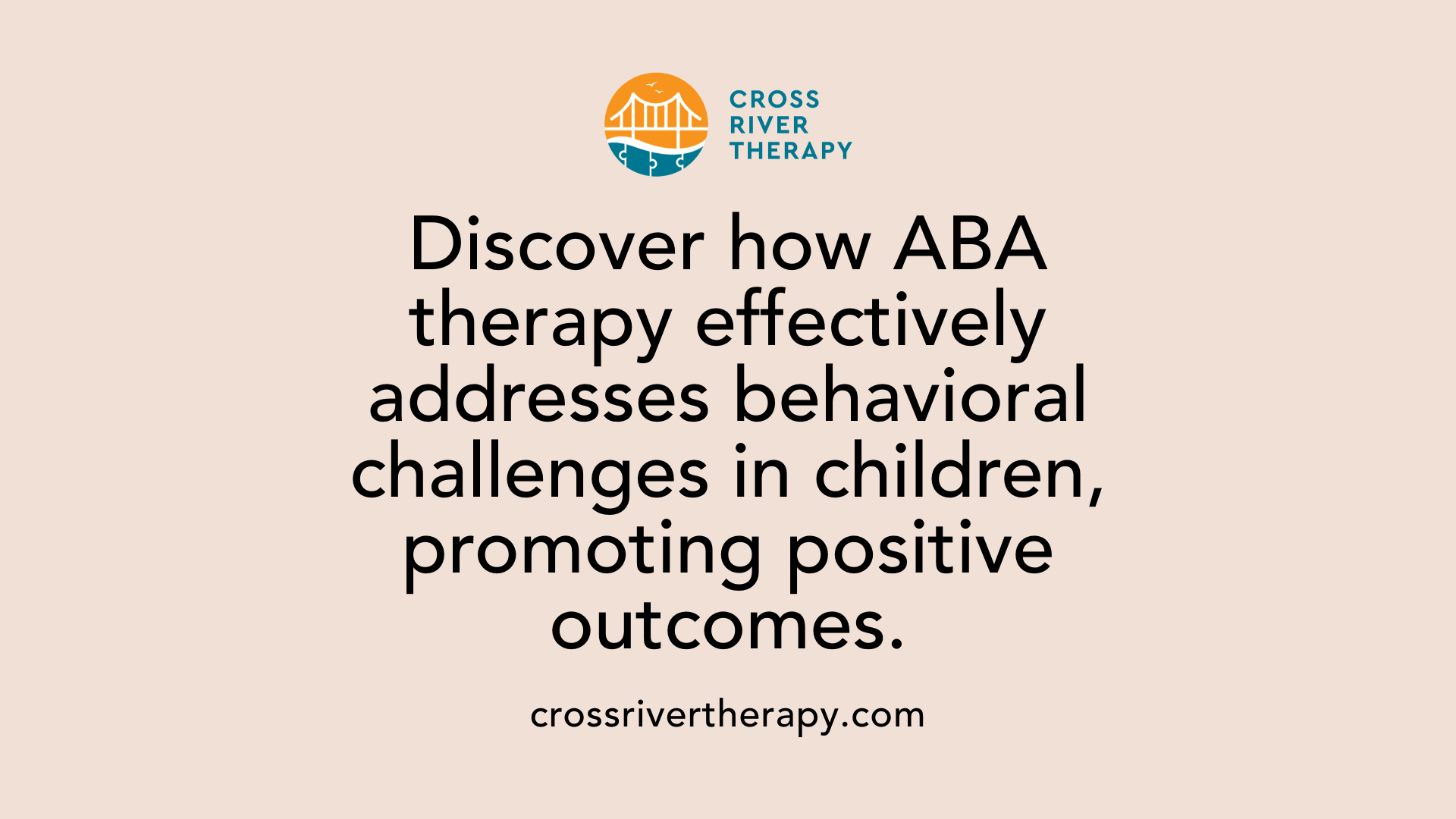
How does ABA therapy help with behavior problems in children?
ABA therapy offers structured and evidence-based techniques that effectively target behavioral issues in children, particularly those with Autism Spectrum Disorder (ASD). By focusing on the modification of behaviors through positive reinforcement, ABA promotes desired actions while reducing harmful ones. This dual approach assists in cultivating important skills such as social interactions, communication, and learning.
A critical component of ABA involves applying the A-B-Cs of behavior analysis—Antecedent, Behavior, and Consequence. This framework helps practitioners understand what triggers certain behaviors and the resulting outcomes, which allows for tailored interventions. For instance, if a child exhibits noncompliance, ABA can assess the context and implement strategies to encourage cooperation.
Personalization of ABA programs
Each ABA program is designed with the specific needs of the child in mind. This personalization ensures that strategies resonate well with the child's unique strengths and challenges, making the interventions more effective. Board Certified Behavior Analysts (BCBAs) play a key role by conducting Functional Behavior Assessments (FBAs) to identify underlying causes of behavior, leading to targeted and individualized intervention plans.
Evidence-based techniques in ABA
The techniques used in ABA therapy are scientifically validated, enhancing their reliability and effectiveness. For example, differential reinforcement methods reward children for compliant behavior, helping to reinforce positive changes over time. Furthermore, using strategies like modeling appropriate behavior and providing clear, simple instructions can greatly enhance compliance rates.
Role of BCBAs
BCBAs are essential in implementing ABA therapy effectively. They not only design personalized plans based on their assessment but also monitor progress and adjust techniques as needed. Their expertise ensures a systematic approach, fostering positive behavioral changes and better outcomes. Ultimately, ABA therapy aims to create a supportive environment where children learn to follow directions and engage in adaptive behaviors, significantly improving their overall quality of life.
Understanding Noncompliance and Defiance in Children
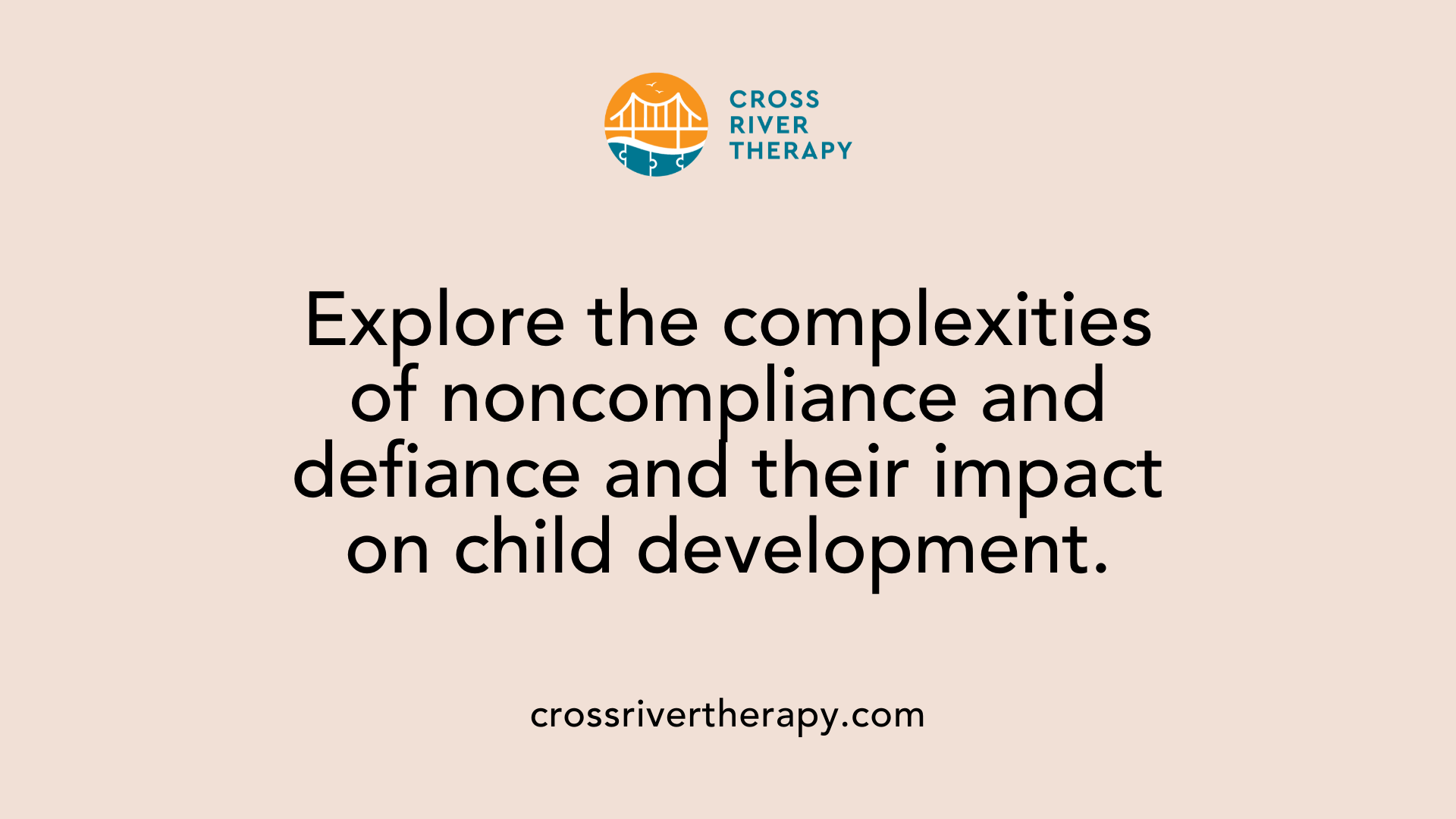
Types and Forms of Noncompliance
Noncompliance in children encompasses various behaviors. The primary types include:
- Direct Defiance: Angry refusal of requests.
- Passive Noncompliance: Ignoring authority figures without a verbal response.
- Simple Noncompliance: Calmly providing reasons for refusal.
- Negotiation: Attempting to bargain with adults.
Each form presents unique challenges in behavioral management within Applied Behavior Analysis (ABA) therapy.
Contributing Factors to Noncompliance
Several factors influence a child's likelihood to comply, including:
- Task Difficulty: Complex tasks may overwhelm the child.
- Communication Barriers: Insufficient understanding of instructions can lead to noncompliance.
- Emotional State: Stress or frustration may hinder cooperative behavior.
- Motivation Levels: Child's interest in activities can significantly affect their response.
Strategies like providing choices and using positive reinforcement can effectively address these challenges.
Impact on Child Development
Noncompliance isn't merely a behavioral concern; it can impact a child's social and emotional development. Children exhibiting high levels of noncompliance may be at risk of future behavioral disorders, like Oppositional Defiant Disorder (ODD). Early interventions, such as behavioral parent training, can foster positive behavior changes, ensuring a supportive path for emotional and social growth.
Effective Techniques in ABA for Increasing Compliance
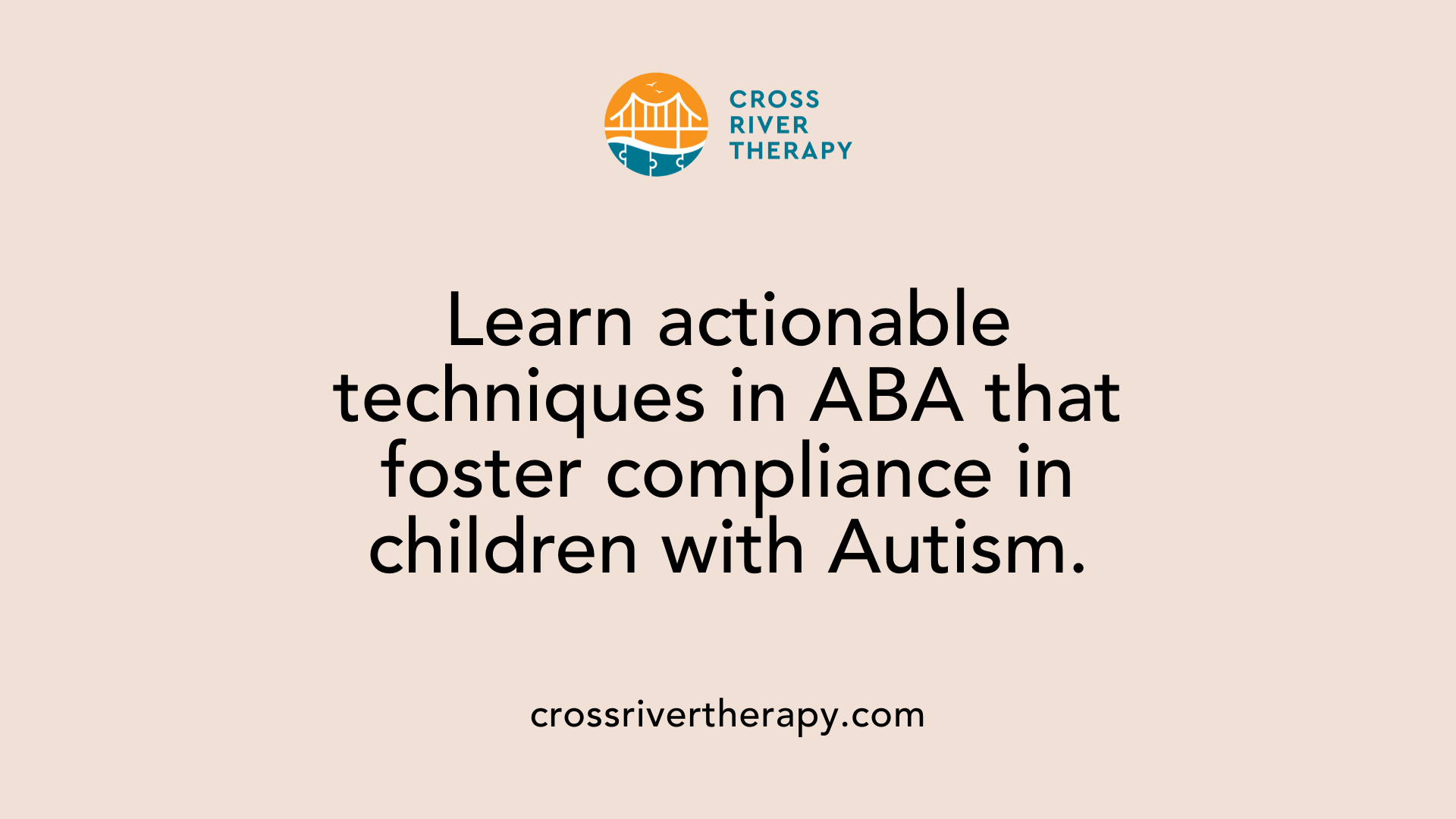
What techniques are effective in increasing compliance in children with autism?
To promote compliance in children with autism, parents and therapists should focus on clear and consistent communication. Effective strategies include:
Providing Clear Instructions: Ensuring that directions are easy to understand helps in minimizing confusion and misunderstanding.
Offering Choices: Presenting options can enhance a child's sense of autonomy. For example, instead of simply asking a child to get dressed, offering a selection between two outfits can increase engagement and compliance.
Implementing Positive Reinforcement: Immediate and specific praise or tangible rewards reinforce desired behaviors. Reward systems can motivate children to comply with requests when they feel their efforts are acknowledged.
What are outcome-based and antecedent-based interventions?
Interventions to increase compliance can be categorized into:
| Type of Intervention | Description | Effectiveness |
|---|---|---|
| Antecedent-Based | Involve proactive strategies like providing advance notice of instructions. | Mixed effectiveness; may not consistently enhance compliance. |
| Consequence-Based | Use differential reinforcement, rewarding compliant behavior to encourage repetition. | Generally more successful; effective in improving compliance for various children. |
What personalized techniques can improve compliance?
Personalized approaches in ABA therapy can further enhance compliance:
- Functional Behavior Assessment (FBA): Understanding a child’s specific triggers for non-compliance allows for tailored interventions.
- Flexibility in Strategies: Recognizing that every child is different, adapting techniques to meet individual needs is crucial for success.
- Structured Routines: Establishing consistent daily routines creates predictability, which can significantly improve compliance.
Additionally, engaging in positive interactions throughout the day can build trust and rapport, making children more receptive to instructions. By modeling flexibility and fostering autonomy, parents can further support their children's ability to comply with expectations.
Practical Insights: Redirecting Noncompliance in Children
What are some ABA strategies for redirecting non-compliance in children?
Effective strategies for managing noncompliance in children often come from Applied Behavior Analysis (ABA) principles. These include:
- Providing Single, Clear Instructions: Ensure commands are simple and to the point to avoid confusion.
- Using Positive Reinforcement: Offer immediate praise or tangible rewards when children follow directions, reinforcing desired behaviors.
- Offering Choices: Presenting children with limited options, such as selecting between two outfits, promotes their sense of autonomy and cooperation.
- Ignoring the Behavior: In some cases, actively ignoring mild non-compliant behaviors can reduce their occurrence over time.
- Utilizing Distractions: Redirect a child’s focus to a more engaging activity if they begin to resist compliance.
- Setting Clear Expectations: Clearly express what behavior you expect, specifying the consequences for compliance and noncompliance.
- Redirecting Energy: Channel a child's energy into constructive activities when they show signs of noncompliance.
Role of positive reinforcement and redirection
Positive reinforcement plays a critical role in enhancing compliance. By providing specific praise immediately after a child complies, parents and therapists can reinforce desired behaviors effectively. Implementing rewards systems, such as token economies, can also foster motivation and encourage children to adhere to instructions.
Importance of clear instructions and expectations
Clarity in communication is essential when giving instructions. Ensuring a child's attention before issuing commands significantly increases compliance rates. Limiting repetitions of commands underscores the importance of listening the first time, making compliance more valuable. Overall, these strategies can significantly enhance the therapeutic experience, leading to better outcomes in ABA therapy.
Identifying and Alleviating Behavioral Triggers in ABA Therapy
What is a Functional Behavior Assessment (FBA)?
A Functional Behavior Assessment (FBA) is a systematic method used in ABA therapy to identify the underlying triggers of specific behaviors, including non-compliance. This process involves gathering data through observations, interviews, and direct assessments to understand the reasons behind a child's behavior. By pinpointing these factors, therapists can develop tailored interventions that specifically address the identified triggers, increasing the likelihood of positive outcomes.
How can we understand and address triggers?
Understanding triggers is crucial for effective ABA therapy. Common factors contributing to non-compliance include:
- Task Difficulty: If tasks are perceived as too hard, children may resist completion.
- Environmental Factors: Distractions or chaotic settings can hinder focus.
- Communication Barriers: Misunderstandings can lead to frustration and refusal.
- Emotional State: Anxiety or emotional distress can result in defiance. By addressing these triggers, therapists can facilitate smoother interactions.
How do we create supportive environments?
Creating a supportive environment is essential for enhancing compliance among children undergoing ABA therapy. Elements that help include:
- Clearly Defined Boundaries: Establishing and consistently enforcing rules can help children understand expectations.
- Positive Reinforcement: Acknowledging and rewarding compliant behaviors reinforces desired actions.
- Flexibility and Choice: Allowing children to make choices in low-stakes situations can foster a sense of control, leading to better compliance.
By focusing on these strategies, practitioners can create a nurturing environment that encourages children to engage positively and reduces non-compliance.
The Role of Parental Involvement in Managing Noncompliance
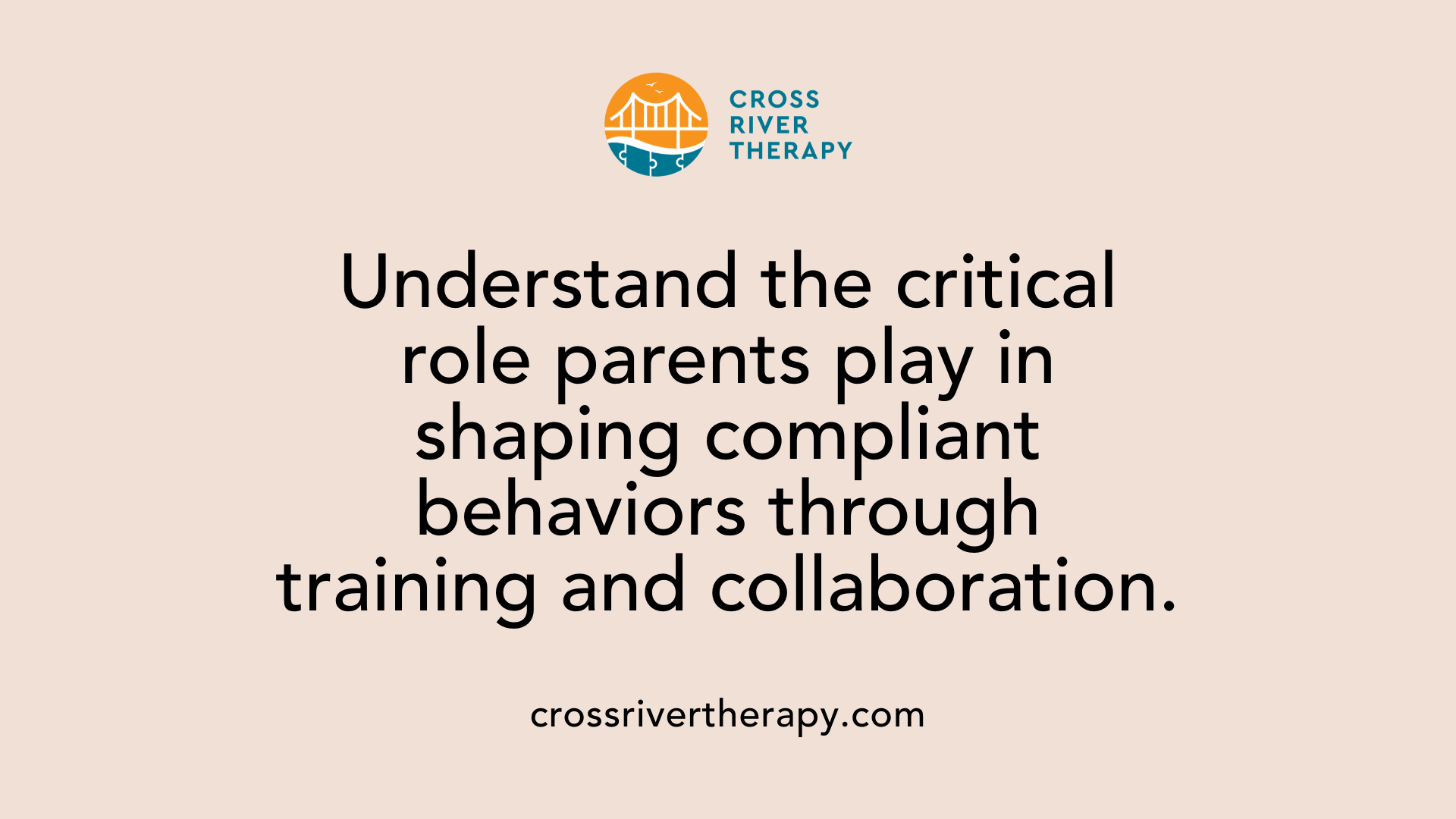
Parent education and training
Parental involvement is crucial in managing children's noncompliance, particularly in the context of Applied Behavior Analysis (ABA). Educating parents on behavioral strategies empowers them to implement effective interventions at home. Parents can benefit from tailored training programs that reinforce their skills in providing clear instructions and managing their children’s behavior effectively.
Behavioral Parent Training (BPT)
One established approach to foster compliance is Behavioral Parent Training (BPT). This evidence-based intervention focuses on strengthening the parent-child relationship. BPT trains parents to recognize and reward positive behaviors, while also implementing clear commands and consistent follow-through. By focusing on reinforcement rather than punishment, parents can minimize negative behaviors and encourage desired actions in a supportive environment.
Collaboration between parents and therapists
Collaboration between parents and therapists is essential for creating effective treatment plans. Regular communication helps ensure consistency across settings, enabling parents to adopt therapeutic strategies learned in sessions. For example, therapists might share strategies from ABA sessions, which parents can then apply to everyday situations, reinforcing compliance and improving overall outcomes.
| Strategy Type | Description | Benefits |
|---|---|---|
| Parent Training | Educational sessions for parents | Empowers parents, enhances skills |
| BPT | Structured interventions for behavior management | Fosters positive behaviors, strengthens relationships |
| Collaborative Approach | Joint efforts between parents and therapists | Ensures consistency, improves treatment effectiveness |
Parental involvement, through education, behavioral training, and collaboration, significantly enhances the effectiveness of ABA therapy in managing noncompliance, fostering a more supportive environment for children.
Theoretical Foundations and Evidence-Based Practices in ABA
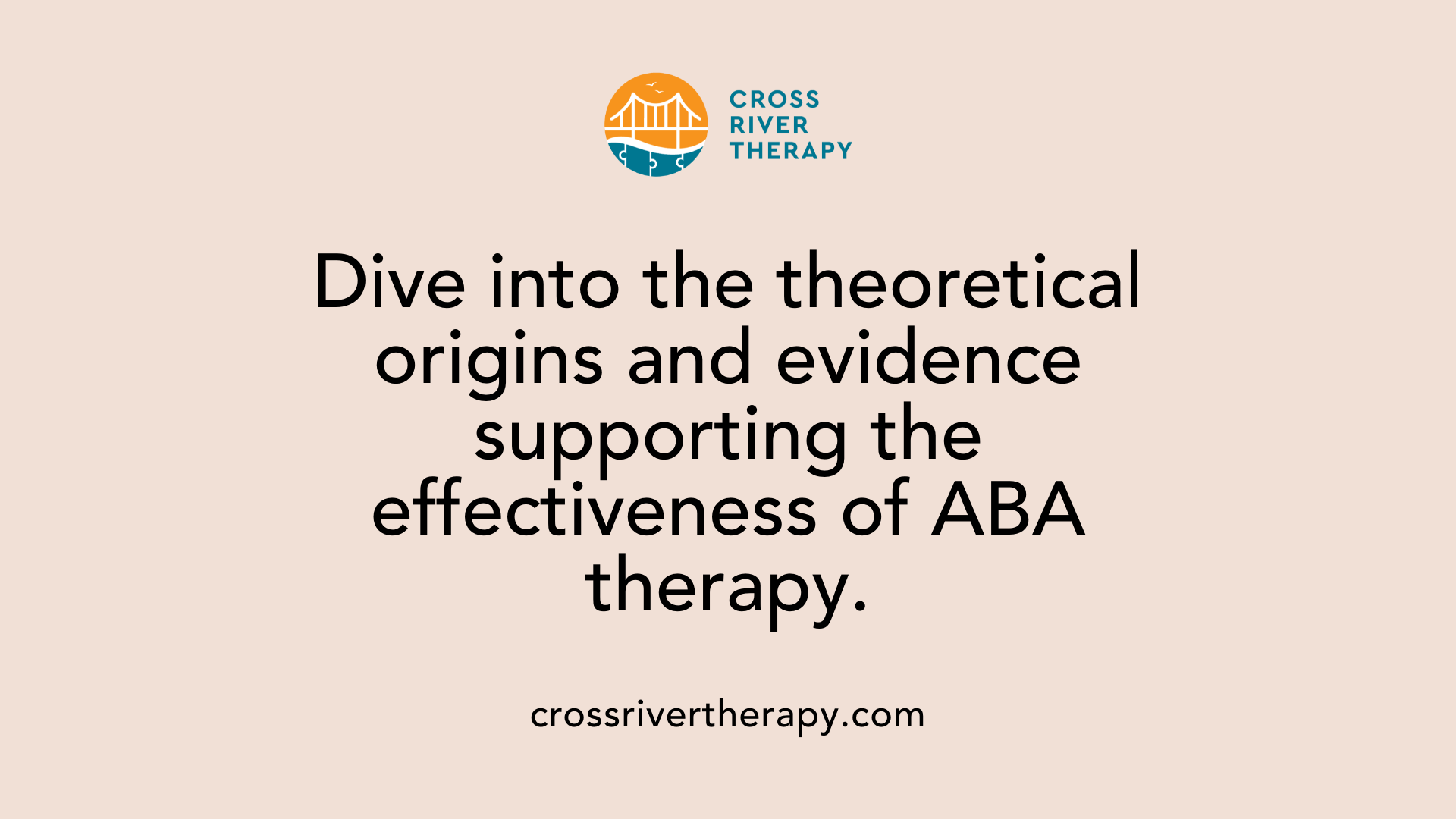
The origin of ABA therapy
Applied Behavior Analysis (ABA) therapy has its roots in the early 20th century, largely influenced by the works of B.F. Skinner and other behaviorists. It emerged as a scientific approach focused on understanding and modifying behavior through systematic observation, data collection, and application of behavioral principles. Its primary goal has been to improve skills essential for individuals with Autism Spectrum Disorder (ASD), leading to healthier social interactions, enhanced communication, and increased learning capabilities.
Research backing ABA's effectiveness
Numerous studies have demonstrated the effectiveness of ABA in tackling non-compliance and other behavioral issues. Research consistently shows positive outcomes when ABA techniques are employed, showcasing improvements in compliance and the acquisition of functional skills. For instance, interventions like differential reinforcement have been validated, leading to a reduction in non-compliance among children with ASD. Furthermore, reports indicate that ABA therapy tailored to individual needs, coupled with positive reinforcement, fosters lasting behavioral changes and helps mitigate future behavioral disorders.
Implementation of ABA techniques
Implementing ABA therapy involves utilizing evidence-based strategies carefully designed to address specific behaviors. Techniques such as conducting Functional Behavior Assessments, reinforcing compliant behavior immediately, and maintaining consistency in responses are at the forefront. Practitioners promote positive interactions, emphasize praise for desired actions, and tailor rewards to motivate compliance. Programs like Behavioral Parent Training (BPT) are integral in equipping parents with tools and knowledge to facilitate compliance effectively. Collectively, these strategies exemplify the structured and personalized approach of ABA, reinforcing its efficacy in supporting children with developmental challenges.
Overcoming Defiance: Long-Term Benefits of Consistent ABA Strategies
Importance of consistency and structure
Consistency is crucial in ABA therapy as it provides a structured environment where children can thrive. A predictable routine helps children understand expectations and reduces anxiety, making compliance more likely. When instructions and responses are consistent, children learn to follow directions more easily, thus fostering their overall development.
Building trust with the child
Establishing trust and rapport between the therapist and the child is vital. Trust helps mitigate non-compliance, as children feel secure in their interactions. When therapists and caregivers approach behavior modification with patience and positive reinforcement, children are more likely to engage and cooperate, easing the therapeutic process.
Long-term outcomes in behavior modification
Research indicates that consistent use of ABA strategies can lead to significant long-term improvements in behavior. Children who receive ongoing support in compliance through personalized interventions are less likely to develop oppositional behaviors as they grow. The iterative process of setting clear expectations and systematically rewarding compliance influences positive behavioral changes, assisting in reducing noncompliance and its associated risks throughout childhood.
Harnessing the Power of ABA for Lasting Behavioral Changes
ABA therapy offers a structured and scientifically validated approach to managing noncompliance and defiance in children, particularly those with ASD. By addressing root causes and employing personalized interventions, ABA not only promotes immediate behavioral changes but also supports long-term development. As children learn to navigate boundaries and expectations, the consistency and reinforcement inherent in ABA pave the way for improved compliance and enhanced quality of life. Parents, educators, and therapists can collectively work towards achieving these outcomes, ensuring that children have the support they need at every step of their developmental journey.
References
- Addressing Non-Compliance in ABA Therapy - Powerback Pediatrics
- Listening To Directions: Dealing With Noncompliance
- AN ANALYSIS OF MODIFICATIONS TO THE THREE-STEP GUIDED ...
- 6 Strategies for Increasing Children's Positive Behaviors
- Non-Compliant Behavior: Symptoms, Causes, and What to Do- Cadey
- Understanding and Parenting Children's Noncompliant Behavior
- Can ABA Therapy Help Manage Challenging Behaviors in Autism?
- Applied Behavior Analysis (ABA) | Autism Speaks
- Applied Behavioral Analysis (ABA) - Autism Speaks
- Expert Q&A: How ABA therapy can help with severe behaviors



